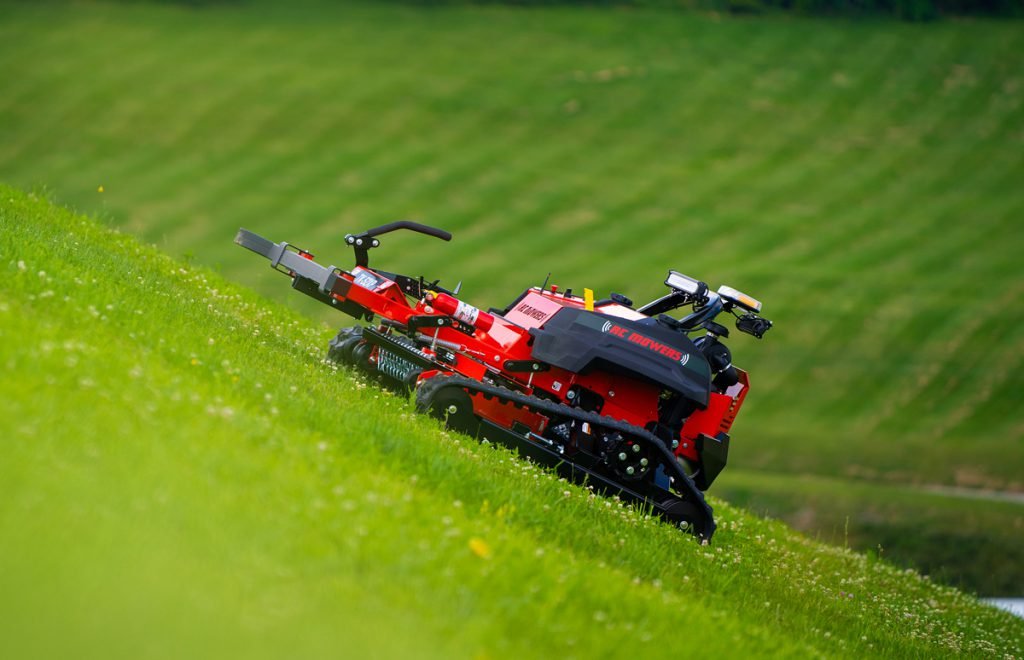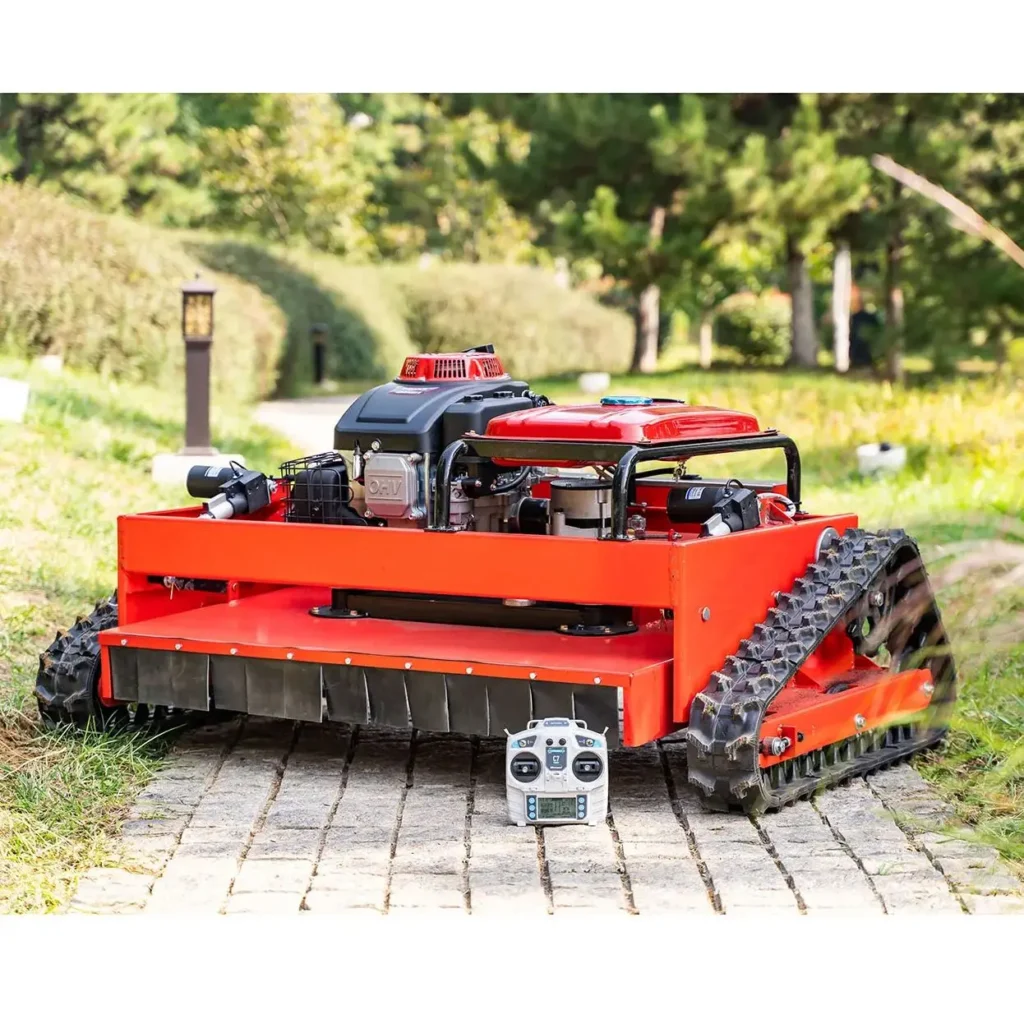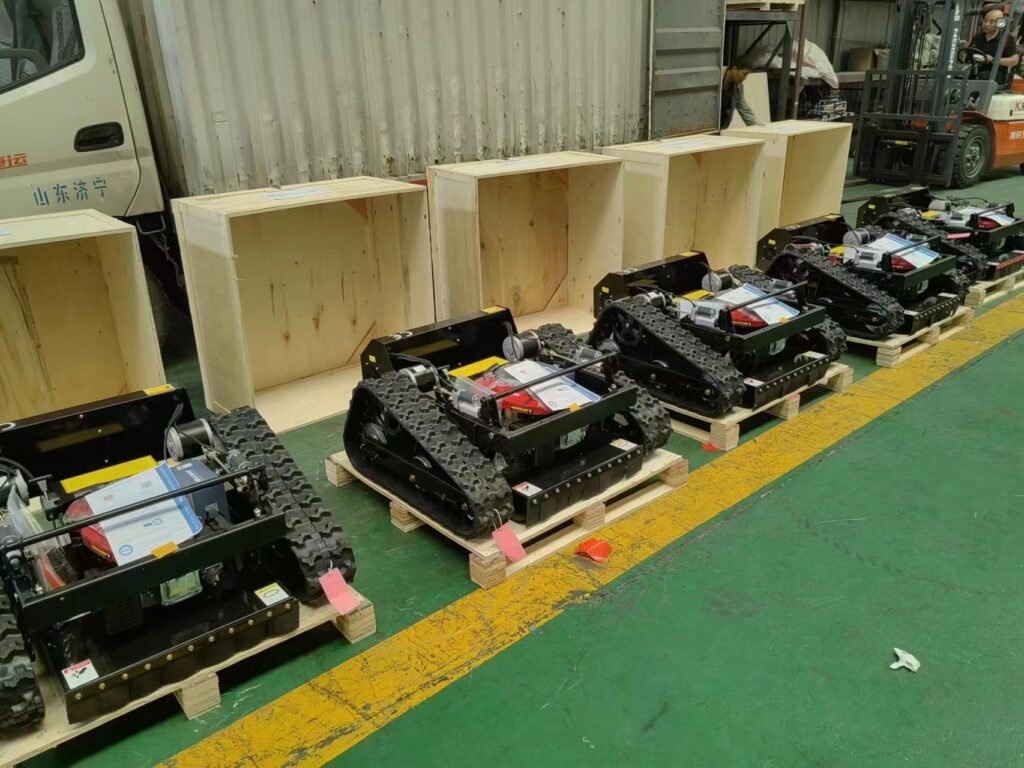Maintaining a large lawn can be a daunting task without the right equipment. If you’re dealing with a sizable property, pushing a standard lawn mower across acres of grass isn’t the most practical option. That’s where riding mowers and zero-turn mowers come into play. Both are excellent tools for efficient lawn care, but each has distinct advantages depending on your needs. In this article, we’ll compare riding mowers and zero-turn mowers in terms of functionality, performance, ease of use, and overall cost to help you decide which is the best investment for your yard.

1. Understanding the Basics: What is a Riding Mower?
A riding mower is a traditional piece of equipment that allows users to sit comfortably while cutting grass. These mowers look similar to small tractors and are commonly used for medium to large lawns. A riding mower’s cutting deck is positioned underneath the mower’s front or middle section, giving it a wide range of mowing capabilities.
Riding mowers are especially popular because they are straightforward to use, and the learning curve is minimal, making them ideal for homeowners who want a reliable, no-fuss lawn mower.
Key Features of Riding Mowers:
- Steering Wheel: Operated like a car with a steering wheel and foot pedals.
- Mid-Range Speed: Typically slower than zero-turn mowers but offers sufficient speed for most residential lawns.
- Durability: Built to last with relatively lower maintenance needs.
2. Understanding Zero-Turn Mowers: What Makes Them Unique?
Zero-turn mowers are specialized lawn mowers designed for speed and precision. They get their name from their ability to turn at a zero-degree radius, allowing them to spin on a dime. This feature is particularly useful for navigating tight corners, obstacles, and around flower beds or trees.
These mowers are ideal for large lawns, commercial applications, and areas that require frequent and precise mowing.
Key Features of Zero-Turn Mowers:
- Lap Bars for Control: Instead of a steering wheel, zero-turn mowers are controlled using two lap bars, which can take a little getting used to.
- Faster Mowing Speeds: Zero-turn mowers operate at higher speeds, allowing users to cover more ground in less time.
- Enhanced Maneuverability: With a zero-degree turning radius, they are perfect for properties with many obstacles like trees, fences, or flower beds.

3. Performance Comparison: Riding Mower vs. Zero-Turn
When deciding between a riding mower and a zero-turn, performance is one of the most important factors to consider. The mower you choose should align with the size and layout of your lawn, as well as the type of terrain you have.
a) Cutting Speed
- Riding Mower: Riding mowers are slower than zero-turn models, with average speeds of 4-7 mph. This may be sufficient for small to medium lawns but can feel sluggish on large properties.
- Zero-Turn Mower: Known for speed, zero-turn mowers can reach up to 10 mph. This higher speed drastically cuts down the time needed to mow large lawns, making them the preferred choice for commercial or large-scale properties.
b) Maneuverability
- Riding Mower: While effective for straight mowing, riding mowers have a larger turning radius. This makes them less suited for properties with multiple obstacles. Tight corners or intricate landscaping can pose a challenge.
- Zero-Turn Mower: With their namesake zero-degree turning radius, zero-turn mowers can pivot and navigate obstacles with ease. Their ability to maneuver in tight spaces makes them a popular choice for more complex lawn layouts.
c) Terrain Handling
- Riding Mower: Riding mowers handle uneven or sloped terrain well, offering stability on hills and rugged areas. They’re great for lawns that aren’t perfectly flat.
- Zero-Turn Mower: These mowers are best suited for flat terrains. They don’t perform as well on steep hills due to their design, which can make them less stable when mowing on inclines.

4. Ease of Use: Which is Simpler to Operate?
For many homeowners, ease of use is a critical factor. You want a mower that’s intuitive, comfortable, and doesn’t require an engineering degree to operate.
a) Learning Curve
- Riding Mower: Using a riding mower is intuitive. If you’ve driven a car, you’ll quickly pick up on operating a riding mower, thanks to its steering wheel and simple foot pedals.
- Zero-Turn Mower: There’s a steeper learning curve with a zero-turn mower, as it relies on lap bars for control instead of a steering wheel. However, once you get the hang of it, the control becomes second nature, and users often appreciate the precision of the steering.
b) Comfort
- Riding Mower: Riding mowers are generally more comfortable for extended mowing sessions due to their larger seats and conventional steering systems. They also tend to have better suspension systems, absorbing more shocks from bumpy lawns.
- Zero-Turn Mower: Zero-turn mowers can feel a bit more rigid, especially if you’re using one on uneven terrain. However, newer models have improved seat comfort and suspension systems, making them more suitable for longer mowing jobs.
5. Maintenance Considerations
No one enjoys unexpected maintenance costs or having their mower out of commission during peak lawn care season. Understanding the long-term maintenance demands of each mower can help you make a more informed decision.
a) Riding Mower Maintenance
Riding mowers are typically more durable and require less frequent maintenance. Parts like the engine, tires, and belts are easily accessible, and regular maintenance like oil changes and blade sharpening are straightforward.
b) Zero-Turn Mower Maintenance
Zero-turn mowers can be slightly more expensive to maintain due to their complex mechanisms and higher speeds. The lap bar system and hydrostatic transmission may need more attention, especially if used in commercial settings. That said, they are robust machines that, with proper care, can last for years.

6. Price and Budget Considerations
Cost is a significant deciding factor for many buyers. While both types of mowers come in a range of prices, the investment you make should align with your lawn care needs and how frequently you’ll use the machine.
a) Riding Mower Cost
Riding mowers tend to be more affordable, with entry-level models available for around $1,500 to $2,000. Premium models with larger cutting decks or more powerful engines can range upwards of $3,000 or more.
b) Zero-Turn Mower Cost
Zero-turn mowers are generally more expensive due to their advanced technology and high performance. Entry-level residential models typically start at $2,500 to $3,000, while commercial-grade models can cost upwards of $5,000 or more.
7. Lawn Size and Layout: Which Mower is Right for Your Yard?
The size and design of your lawn will play a key role in determining which type of mower is the best fit.
a) Best for Small to Medium Lawns
If your lawn is smaller (less than an acre) or of medium size (up to 3 acres), a riding mower may suffice. They’re also easier to store in smaller spaces, making them a practical choice for average-sized homes.
b) Best for Large Lawns
Zero-turn mowers excel in large lawns (over 3 acres) due to their speed and maneuverability. If you have a vast property with intricate landscaping, such as trees, flower beds, or obstacles, a zero-turn mower will allow you to mow faster and with greater precision.
8. Pros and Cons of Riding Mowers
Pros:
- Easier to operate with a steering wheel and pedals.
- Affordable for most homeowners.
- Works well on uneven terrain.
- Comfortable for longer mowing sessions.
Cons:
- Larger turning radius, making tight maneuvers more difficult.
- Slower than zero-turn models.
- Less efficient for large lawns with obstacles.

9. Pros and Cons of Zero-Turn Mowers
Pros:
- Superior maneuverability with zero-degree turning radius.
- Faster mowing speeds, ideal for large properties.
- Excellent for intricate lawn layouts with many obstacles.
Cons:
- More expensive than riding mowers.
- Steeper learning curve with lap bar controls.
- Not ideal for uneven or hilly terrains.
10. Environmental Impact and Fuel Efficiency
a) Riding Mower:
Riding mowers typically have lower fuel efficiency due to their larger engines and slower speeds. If you have a small to medium lawn, this may not be a significant factor, but for larger properties, fuel costs can add up over time.
b) Zero-Turn Mower:
Zero-turn mowers, with their higher speed and efficiency, can cover more ground on less fuel, potentially saving you money in the long run. However, they still have sizable engines that consume a fair amount of fuel.

FAQs About Riding Mowers and Zero-Turn Mowers
1. Is a zero-turn mower faster than a riding mower?
Yes, zero-turn mowers are significantly faster than riding mowers, with speeds of up to 10 mph compared to 4-7 mph for riding mowers.
2. Can I use a zero-turn mower on a sloped lawn?
While zero-turn mowers can handle slight inclines, they are not ideal for steep hills due to stability concerns.
3. Are zero-turn mowers harder to operate?
Zero-turn mowers have a learning curve because they use lap bars for steering instead of a steering wheel, but most users get comfortable with the controls after a few sessions.
4. Which is cheaper to maintain, a riding mower or a zero-turn?
Generally, riding mowers have lower maintenance costs compared to zero-turn mowers, which have more complex mechanisms.
5. How much lawn can a zero-turn mower handle?
Zero-turn mowers are ideal for properties larger than 3 acres, especially those with obstacles.
6. Are zero-turn mowers worth the extra cost?
If you have a large lawn with intricate landscaping or need to mow frequently, the added speed, efficiency, and precision of a zero-turn mower can justify the higher cost.
Conclusion: Which Mower is Best for You?
Choosing between a riding mower and a zero-turn mower ultimately depends on your specific needs. If you have a large, open lawn with minimal obstacles, a riding mower might be sufficient, especially if you’re looking for a cost-effective solution. However, if you need speed, precision, and have a complex lawn layout with numerous obstacles, a zero-turn mower offers superior performance.
Assess your budget, lawn size, and comfort level with the controls to make the best decision for your yard care needs.





